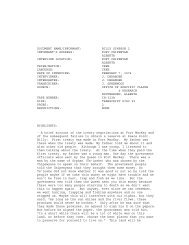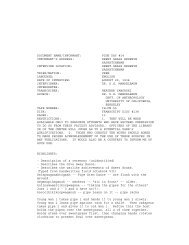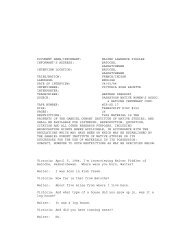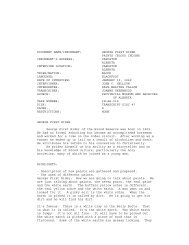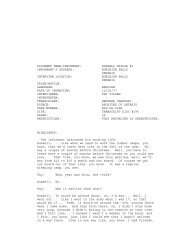Contents of It's not All in Your Head by Asmundson and Taylor
Contents of It's not All in Your Head by Asmundson and Taylor
Contents of It's not All in Your Head by Asmundson and Taylor
Create successful ePaper yourself
Turn your PDF publications into a flip-book with our unique Google optimized e-Paper software.
treatment has been successful <strong>in</strong> treat<strong>in</strong>g health anxiety <strong>and</strong> general medical conditions<br />
because psychoeducation provides new <strong>in</strong>formation to clients (e.g., symptoms <strong>of</strong> the<br />
disorder, cop<strong>in</strong>g strategies, relaxation tra<strong>in</strong><strong>in</strong>g, etc.; <strong>Asmundson</strong> & <strong>Taylor</strong>, 2004).<br />
Psychoeducation alone may be a good treatment for health anxiety especially when an<br />
<strong>in</strong>dividual has a good prognosis (<strong>Taylor</strong> et al., 2005). Psychoeducation is an attractive<br />
treatment to practitioners because it is easy to adm<strong>in</strong>ister to <strong>in</strong>dividuals or small groups.<br />
ERP is a useful component <strong>in</strong> CBT for health anxiety because it helps reduce<br />
phobic avoidance (<strong>Asmundson</strong> & <strong>Taylor</strong>, 2004). Exposure may be provided <strong>in</strong> three<br />
forms. In vivo exposure for health anxiety usually <strong>in</strong>volves exposure to disease-related<br />
objects or situations that are harmless yet anxiety provok<strong>in</strong>g (e.g., sick people, hospitals,<br />
physicians, videos; <strong>Asmundson</strong> & <strong>Taylor</strong>, 2004). Interoceptive exposure refers to the<br />
<strong>in</strong>duction <strong>of</strong> feared bodily sensations that are thought to be <strong>in</strong>dicators <strong>of</strong> disease (e.g.,<br />
heart palpitations, shortness <strong>of</strong> breath; <strong>Asmundson</strong> & <strong>Taylor</strong>, 2004). Imag<strong>in</strong>al exposure<br />
<strong>in</strong>volves hav<strong>in</strong>g clients imag<strong>in</strong>e feared health-related situations (e.g., imag<strong>in</strong><strong>in</strong>g hav<strong>in</strong>g a<br />
disease; <strong>Asmundson</strong> & <strong>Taylor</strong>, 2004). When the client is prevented from respond<strong>in</strong>g –<br />
usually <strong>by</strong> delay<strong>in</strong>g or refra<strong>in</strong><strong>in</strong>g from bodily check<strong>in</strong>g or reassurance-seek<strong>in</strong>g – the<br />
anxiety response is reduced (<strong>Taylor</strong> et al., 2005). Anxiety is reduced because the client<br />
comes to underst<strong>and</strong> that the disease-related object or situation is <strong>not</strong> harmful. ERP is a<br />
useful component <strong>of</strong> CBT treatments for health anxiety <strong>and</strong> it appears to be effective both<br />
19



